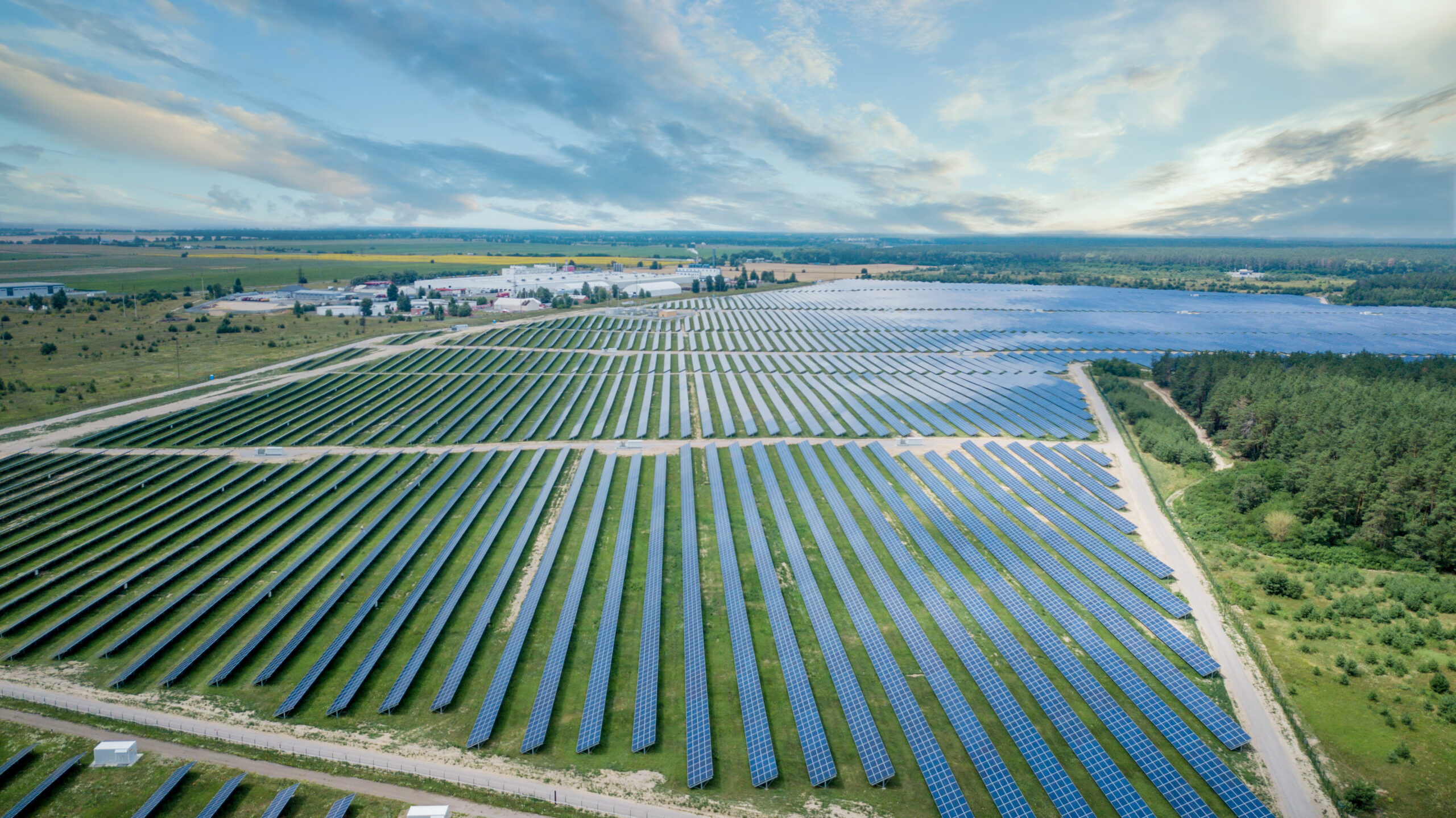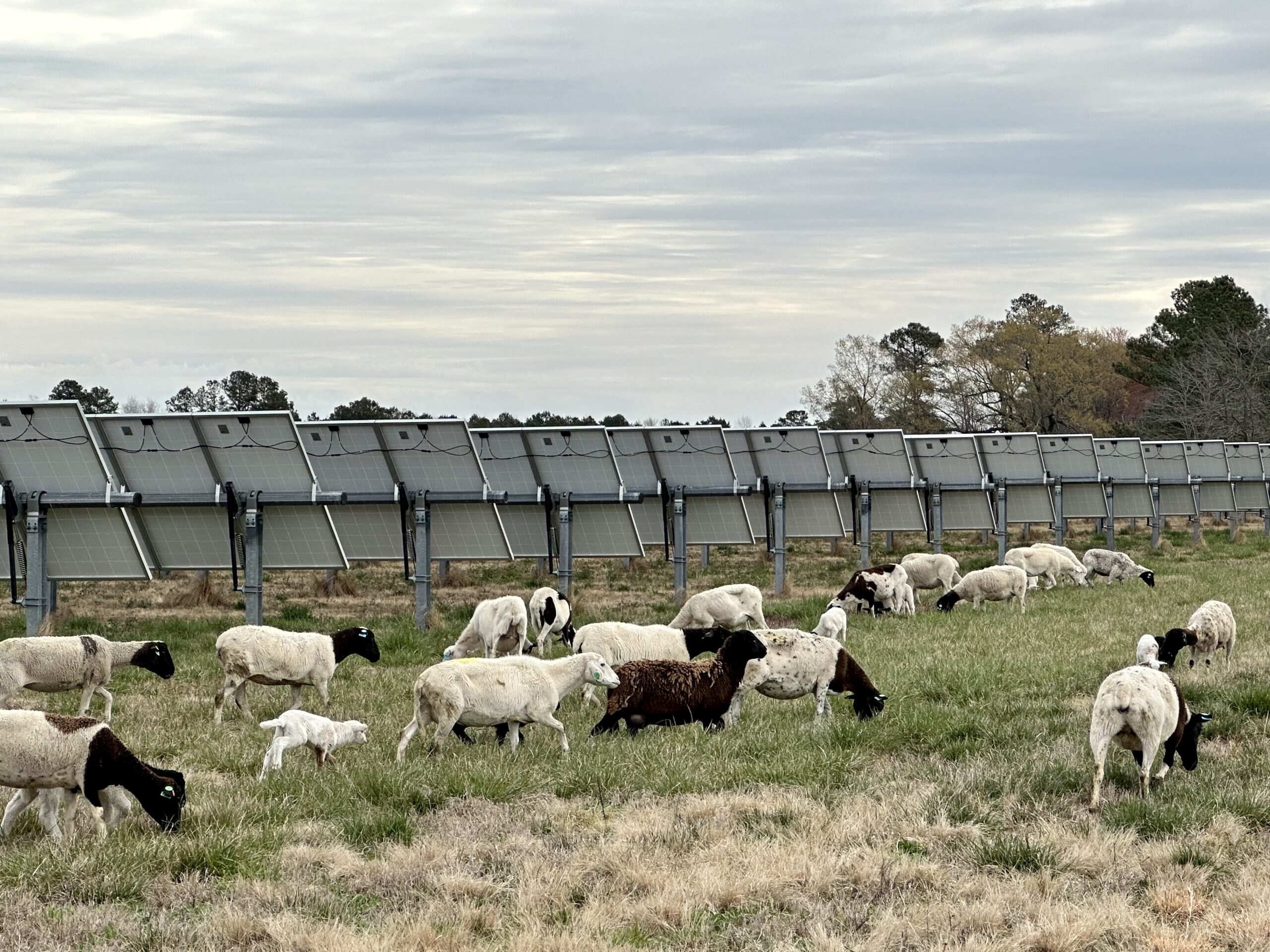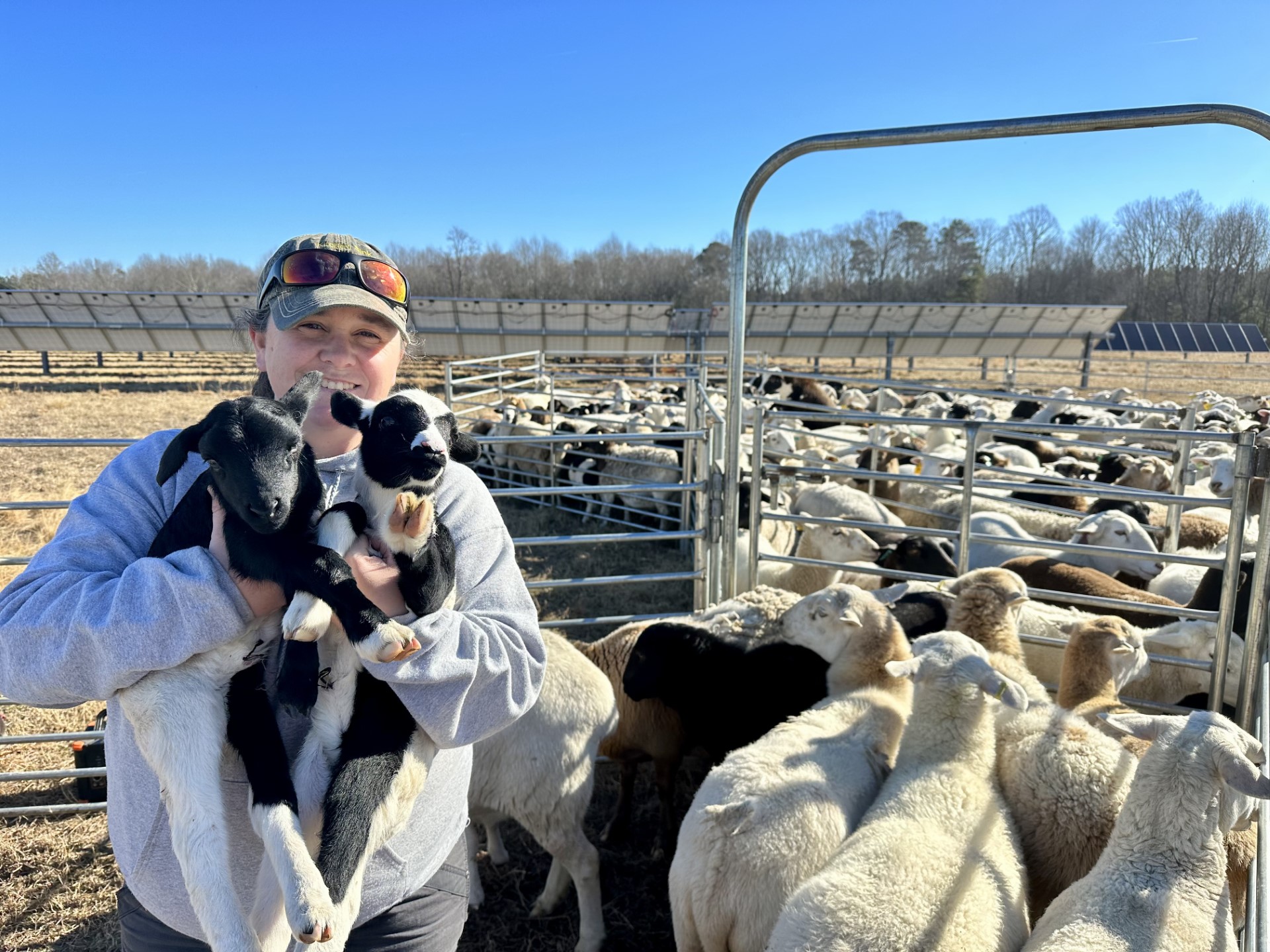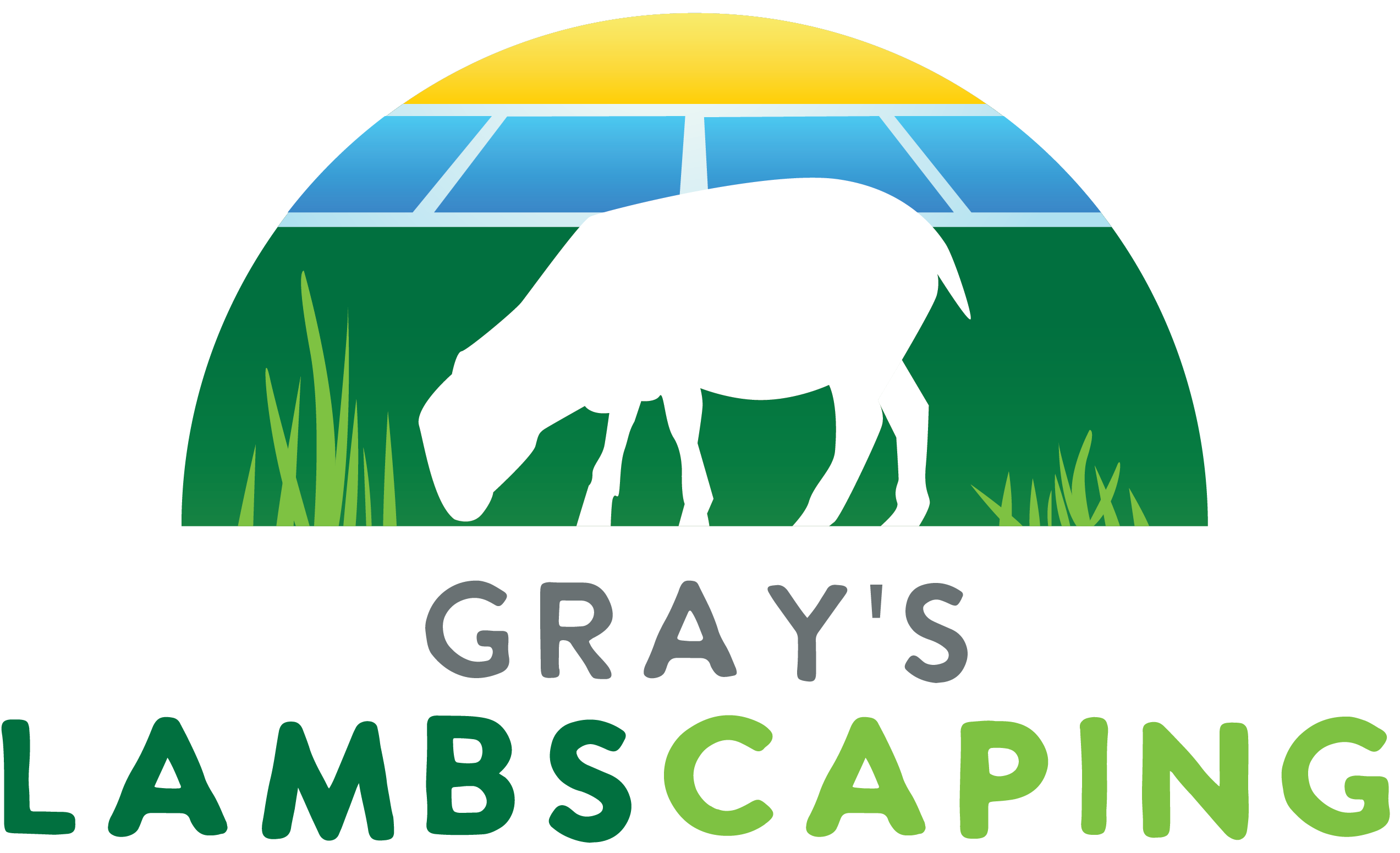The Top Questions Solar Companies Ask Us About Solar Grazing
By: Jess Gray · March 10, 2024 · 11 min
What kind of impact does solar grazing have on solar panel efficiency?
Solar grazing can positively impact panel efficiency by ensuring vegetation does not shade panels, which can decrease their efficiency. The sheep maintain the grass length without disturbing the soil significantly, reducing dust and dirt that could accumulate on panels. Additionally, the absence of heavy machinery reduces soil compaction, aiding water infiltration and further minimizing panel soiling. Healthy grass growth under photovoltaic panels also cools them to keep them working more efficiently.
How does solar grazing compare to traditional vegetation management methods in terms of cost?
Solar grazing is often more cost-effective than traditional methods, such as mechanical mowing or chemical treatments, especially over the long term. While initial setup costs for fencing and logistics may be comparable, ongoing costs are typically lower due to reduced machinery use, labor requirements, and the potential for government subsidies or incentives for environmentally sustainable practices. While mowing costs are typically charged per acre, per mow, grazing costs are distributed annually, making it more cost-effective and a predictable expense. For example, we grazed a 1,200-acre site three times last winter but only charged our client a flat rate for the year. If they worked with a mowing company instead, they’d get three bills just during the winter.
Can solar grazing be implemented year-round?
Yes! Year-round grazing is possible and encouraged, especially in regions with mild winters and perennial grasses. Having animals on-site year-round reduces stress on the animals, improves soil health year-round, and helps prep the land for the coming spring and summer.
Why invest in solar grazing? What’s in it for us?
Sheep provide an eco-friendly alternative to mechanical or chemical vegetation management methods. Our sheep can safely navigate around solar panels, reducing the risk of damage. Their grazing promotes soil health and biodiversity, potentially lowering operation costs and enhancing the environmental profile of the solar farm. Read about more solar grazing benefits in our recent article.
How do you ensure the safety and welfare of the sheep, especially in extreme weather conditions?
We always prioritize animal health by providing 24/7 on-call veterinary care and investing in preventative and herd health strategies with our vet. Our flock has access to water, minerals, and supplements they need to stay healthy. The panels serve as great sources of shade during the summer and protection from winter weather, so there’s no need for additional shelters on-site.
How many sheep are required per acre of solar farm for effective vegetation management?
That’s a great question! Other solar graziers may handle their stocking rate and density differently, but we avoid animal-per-acre estimates due to the effects of rotational grazing. Let’s say our client’s solar site spans 1,000 acres. We find it’s most effective to divide a large property like this into more manageable 50-acre paddocks, creating 20 smaller grazing areas for rotation rather than dispersing the flock across a massive area. In the spring and summer, we move our sheep every few days to maintain plant health and habitats. With this cycle, our sheep cover 100-150 acres per week, which gives the land adequate time to rest and recover between grazings. This strategy optimizes animal health and land use, making a large area manageable and productive for grazing.
What is the duration of the grazing contract, and what does it include?
We strongly recommend multi-year contracts. Most sites require more mowing services and sheep grazing in the first year. However, year-over-year, the costs for mowing decline significantly as the animals change the solar site’s ecology. Long-term contracts ensure that the sheep have adequate time to adapt to the land so our clients see the environmental and economic benefits of grazing versus traditional mowing.
What measures are taken to protect solar equipment from damage by the sheep?
Due to their size and grazing behavior, sheep are generally low-risk to solar equipment. Protective measures include proper fencing to keep sheep away from sensitive areas, choosing breeds with a calm temperament and regular monitoring to address any potential issues promptly. Additionally, installing protective barriers around more vulnerable components can mitigate risks.
How do you handle fencing and the sheep’s security on the solar farm?
We provide and maintain safe and secure fencing composed of fiberglass posts and solar-powered polywire around the grazing area to protect the sheep and ensure they stay in their designated paddocks. We use rotational grazing practices, so our flock routinely moves to graze a new portion of the site.
What are the insurance and liability arrangements in case of damage to solar panels or injury to the sheep?
Our service includes comprehensive insurance coverage for potential damage to solar panels and any injuries to the sheep. Liability terms are clearly outlined in the contract to protect both parties. In our years of experience, we have never had a sheep damage a panel.
Can solar grazing be integrated with other land management practices, such as pollinator habitat enhancement?
Yes! Solar grazing can be part of a holistic land management plan that includes pollinator habitat enhancement. Our certified wildlife biologist customizes each grazing plan to support biodiversity, including maintaining areas with flowering plants and keystone species that benefit pollinators based on your solar site’s ecoregion. Whereas mowing destroys plants before they bloom, solar grazing promotes reblooming and expands pollinator habitats.
What are the costs associated with your solar grazing service?
Solar grazing costs vary depending on the size of the solar farm, the number of sheep required, site condition, and contract length. We provide a detailed quote based on a site assessment and the solar farm’s specific needs. Book a free consultation with us to get a quote.
How do you monitor and manage the grazing process to ensure optimal vegetation control without damaging the solar equipment?
We allocate a minimum of two trained shepherds to monitor our flock and the land per solar site. We also invest in top-quality veterinary care, providing routine herd health check-ups and 24/7 telehealth coverage. In general, sheep do not pose a risk to solar infrastructure, making them the ideal species for solar grazing projects.
How does solar grazing impact the local ecosystem and biodiversity?
Solar grazing generally has a positive impact on local ecosystems and biodiversity. By maintaining grassland habitats and avoiding harmful chemicals, it supports a variety of plant and animal species. The practice can improve soil quality and water retention, contribute to carbon sequestration, and create a more diverse and resilient ecosystem around solar installations. Read more about the environmental benefits of solar grazing in our recent article.

About Jess
Jess Gray is the CEO of Gray’s LAMBscaping, LLC, overseeing the company’s financial management, policy development, logistics, and reporting. As a 2023 Nuffield International Agricultural Scholar, Gray has represented her company in over half a dozen countries, focusing her research on integrating solar energy with livestock grazing.



